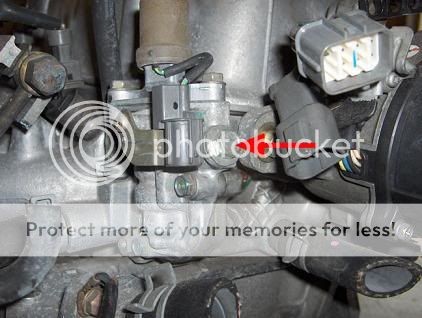Swapping engines in your 1996-2000 Honda Civic can unlock a new level of performance and driving excitement. However, navigating the complexities of engine wiring, especially when dealing with different OBD (On-Board Diagnostics) systems, can be daunting. This comprehensive guide zeroes in on the crucial aspect of your swap: the 99 Civic Obd2 Engine Harness. Whether you’re upgrading to a more powerful B-series VTEC engine or simply replacing a worn-out harness, understanding the nuances of your 1999 Civic’s OBD2 system is key to a successful and smooth swap. We’ll break down the essentials of wiring for various engine swaps, ensuring your project stays on track and your Civic roars back to life with enhanced power.
Decoding OBD Systems for 99 Civics
The 1996-2000 Honda Civic generation (EK/EJ) is categorized by the OBD2 system, a significant leap from earlier OBD1 systems in terms of diagnostics and emissions control. Within this generation, there’s a further split: OBD2a (1996-1998) and OBD2b (1999-2000). The 1999 Civic falls squarely into the OBD2b category, which is critical to note because ECU connectors and some wiring configurations differ between OBD2a and OBD2b. Using the correct 99 Civic OBD2 engine harness for your specific swap is not just recommended – it’s essential for avoiding electrical issues and ensuring your engine runs correctly with the ECU.
OBD2 Engine Swaps into 99 Civics Using OBD2 ECU
Let’s dive into specific engine swap scenarios, focusing on keeping your 99 Civic OBD2 compliant when using an OBD2 ECU.
D16Y8 VTEC Swap into DX/LX/CX (D16Y7)
Upgrading your base model 99 Civic (DX, LX, or CX, originally equipped with the D16Y7 non-VTEC engine) to a D16Y8 VTEC engine is a popular and relatively straightforward swap. Since both engines are OBD2, the process is largely plug-and-play, but with a few key wiring considerations:
- VTEC Wiring: Your D16Y7 harness will not have the wiring for the VTEC solenoid and pressure switch, which are essential for the D16Y8’s VTEC system. You will need to add these wires to your 99 Civic OBD2 engine harness. Refer to Figure 7 (OBD2B hybrid pinouts) for specific pin locations on your ECU and engine harness plugs.
- Idle Air Control Valve (IACV): D16Y7 engines use a 3-wire IACV, while the D16Y8 uses a 2-wire IACV. You’ll need to rewire the IACV connector on your 99 Civic OBD2 engine harness to accommodate the 2-wire setup. Again, Figure 7 provides the necessary wiring details.
- Intake Air Temperature Sensor (IAT): The D16Y8 manifold lacks a dedicated location for the IAT sensor, unlike the D16Y7. You’ll need to relocate your IAT sensor to the intake arm. Figure 8 (OBD2 IAT into intake arm) illustrates a common placement for the IAT sensor.
- Secondary O2 Sensor: If you’re using a catalytic converter from a D16Y8 (EX model), you might need to extend the secondary O2 sensor wiring on your 99 Civic OBD2 engine harness or use an O2 sensor extension adapter.
B16A2/B18C1/B18C5 VTEC Swaps into EX (D16Y8), DX/LX/CX (D16Y7), HX (D16Y5)
For those seeking a significant power boost, swapping in a B-series VTEC engine like the B16A2 (Civic Si), B18C1 (Integra GSR), or B18C5 (Integra Type R) is a popular choice. When installing these OBD2 VTEC engines into your 99 Civic, wiring is mostly plug-and-play, especially if you are starting with an EX model. However, some adjustments may be needed:
- IAT Sensor Relocation: Similar to the D16Y8 swap, B-series VTEC intake manifolds typically don’t have a direct IAT sensor port. Relocate the IAT to the intake arm as shown in Figure 8. Alternatively, you can convert to a round-style IAT sensor and mount it on the manifold, as depicted in Figure 9 (Round style IAT).
- Secondary O2 Sensor Extension: As with the D16Y8 swap, ensure the secondary O2 sensor wiring reaches if using an EX-style catalytic converter.
- HX Model Considerations (D16Y5): If you’re swapping into a 99 Civic HX, note that HX models with manual transmissions may require wiring for the knock sensor, as only CVT models originally had knock sensors. Refer to Figure 6 (OBD2A hybrid pinouts) for knock sensor wiring, keeping in mind that 99-00 HX models are still OBD2b in terms of ECU connectors and general OBD system. Also, HX models use a 7-wire O2 sensor which will need to be converted to a 4-wire O2 sensor if the new engine setup uses a standard 4-wire sensor.
B18B/B20B/Z Non-VTEC Swaps
Swapping in a B18B or B20B/Z non-VTEC engine (like from an Integra LS or CRV) into your 99 Civic is also feasible using the OBD2 P75 ECU (ideally an OBD2a P75 as 00-01 OBD2b P75 ECUs have immobilizers). These swaps are generally plug-and-play for most 99 Civic models, but pay attention to these points:
- IACV Wiring (DX/LX/CX): If swapping into a DX, LX, or CX model, you might need to rewire the IACV from 3-wire to 2-wire, similar to the D16Y8 swap into these trims.
- Secondary O2 Sensor Extension (DX/LX/CX): Again, consider the secondary O2 sensor wiring length if using an EX-style catalytic converter.
- IAT Sensor Relocation (DX/LX/CX/EX/HX): Relocate the IAT sensor to the intake arm as the B-series non-VTEC manifolds may not have the correct port.
OBD1 Engine Swaps into 99 Civics Using OBD1 ECU
While less common for 99 Civics which are natively OBD2b, some enthusiasts opt to downgrade to an OBD1 ECU for tuning flexibility or simplicity in certain engine swaps. If you choose this route, using an OBD1 ECU in your 99 Civic will require more significant wiring modifications and potentially an OBD2b to OBD1 ECU adapter harness.
D16Z6 VTEC Swap with P28 ECU
Swapping a D16Z6 OBD1 VTEC engine and using a P28 OBD1 ECU in your 99 Civic involves these key wiring adjustments:
- VTEC Wiring: You’ll need to wire in the VTEC solenoid and pressure switch to the P28 ECU. Figure 1 (OBD1 ECU Wiring) provides the pinouts for OBD1 ECU wiring.
- IACV Wiring: Similar to OBD2 swaps, you’ll need to convert the 3-wire IACV wiring from your 99 Civic OBD2 engine harness to a 2-wire configuration to match the OBD1 ECU and potentially the D16Z6 engine components.
- IAT Sensor: Relocate the IAT sensor to the intake arm or rewire the IAT connector to an OBD1 style connector (Figure 9) to be compatible with OBD1 sensors and ECUs.
- Distributor Adapter: The D16Z6 distributor is OBD1 and will likely require an OBD2 to OBD1 distributor adapter to plug into your 99 Civic OBD2 engine harness (or you may need to adapt the harness connector itself).
- Injector Clips: OBD1 injectors often use different clips. You may need to remove the injector “clips” for plug-and-play compatibility or use OBD1 injectors with OBD1 style connectors. Figure 10 illustrates injector clip modifications.
- Eliminated Sensors: When using an OBD1 ECU, sensors like the CKF (Crankshaft Fluctuation Sensor), EVAP purge, and secondary O2 sensor will be eliminated as OBD1 systems do not utilize them.
B16A2/B18C1/B18C5 VTEC Swaps with OBD1 P30 ECU
For high-performance B-series VTEC swaps using an OBD1 P30 ECU in your 99 Civic, the wiring steps are similar to the D16Z6 OBD1 swap but with specific considerations for VTEC engines:
- VTEC and Knock Sensor Wiring: Wire in the VTEC solenoid, pressure switch, and knock sensor to the P30 ECU using Figure 1.
- IACV and IAT Wiring: Address the IACV and IAT sensor wiring as described for the D16Z6 OBD1 swap.
- Distributor and Injector Adapters/Modifications: Similar to the D16Z6 swap, distributor and injector adapters or modifications might be needed. For 99-00 Civics specifically, you’ll likely need an OBD2B to OBD1/2 distributor adapter and an OBD1/2 B-series DOHC VTEC distributor.
- Alternator Adapter: You might need an OBD2 to OBD1 alternator adapter, or you can use an OBD2 B-series alternator for potentially easier integration with your 99 Civic OBD2 engine harness (depending on your specific harness and engine combination).
- Sensor Elimination: CKF, EVAP purge, and secondary O2 sensor will be eliminated with the OBD1 ECU.
B18A/B Non-VTEC Swaps with OBD1 P75 ECU
If you’re opting for an OBD1 P75 ECU with a B18A/B non-VTEC engine in your 99 Civic, the wiring is again similar to the OBD1 VTEC swaps, but without the VTEC wiring:
- IACV and IAT Wiring: Address the IACV and IAT sensor wiring as needed.
- Distributor and Injector Adapters/Modifications: Distributor and injector adaptations might be necessary, similar to the OBD1 VTEC swaps. For 99-00 Civics, use an OBD2B to OBD1 distributor adapter with either an OBD1 or OBD2 B18A/B distributor.
- Alternator Adapter: An OBD2 to OBD1 alternator adapter or an OBD2 B-series alternator may be required.
- Sensor Elimination: CKF, EVAP purge, EGR, and secondary O2 sensors will be eliminated.
Essential Figures for Wiring Reference
The figures below are crucial visual aids for your 99 Civic OBD2 engine harness wiring project. Carefully study them to understand pin locations and wiring configurations:
Figure 1 (OBD1 ECU Wiring)
- Alt Text: OBD1 ECU wiring diagram and pin removal guide for Honda Civic engine swaps, crucial for understanding modifications to the 99 Civic OBD2 engine harness when downgrading to OBD1.
Figure 2 (JDM VTEC solenoid)
 JDM VTEC Solenoid Bolt
JDM VTEC Solenoid Bolt
- Alt Text: Location of the VTEC pressure switch bolt on a JDM VTEC solenoid, important for ensuring proper VTEC engagement during engine swaps in 99 Civics.
Figure 3 (OBD1 IAT sensor in intake arm)
- Alt Text: Example of OBD1 Intake Air Temperature sensor relocation in the intake arm for a Honda Civic engine swap, a common modification when using OBD1 ECUs with a 99 Civic OBD2 engine harness.
Figure 4 (OBD0 fan switch/OBD1 fan switch)
- Alt Text: Comparison of OBD0 and OBD1 radiator fan switches, illustrating potential differences in sensor types during Honda Civic engine swaps impacting 99 Civic OBD2 engine harness compatibility.
Figure 5 (OBD1 Shocktower harness)
- Alt Text: OBD1 shock tower harness plug, showing the connector interface relevant for integrating older harnesses into 99 Civics or understanding harness adaptations.
Figure 6 (OBD2A hybrid pinouts)
- Alt Text: OBD2A hybrid pinout diagrams and pin removal tool, useful for reference when working with 96-98 Civic wiring and understanding differences from 99 Civic OBD2 engine harness.
Figure 7 (OBD2B hybrid pinouts)
- Alt Text: OBD2B hybrid pinout diagrams specifically for 99-01 Civics and pin removal tool, directly relevant for wiring modifications on a 99 Civic OBD2 engine harness.
Figure 8 (OBD2 IAT into intake arm)
- Alt Text: Example of OBD2 Intake Air Temperature sensor placement in the intake arm for a Honda Civic, a common solution when swapping engines into 99 Civics and needing to relocate sensors.
Figure 9 (Round style IAT)
- Alt Text: Round style Intake Air Temperature sensor, an alternative sensor type that can be used in Honda Civic engine swaps, potentially simplifying IAT sensor integration in 99 Civics.
Figure 10
- Alt Text: OBD2 to OBD1 injector clip modification, illustrating how to adapt injector connectors for compatibility during engine swaps in Honda Civics, including 99 Civic OBD2 engine harness adaptations.
Figure 11
- Alt Text: Comparison of OBD2A and OBD2B Honda Civic engine harnesses, highlighting the differences between 96-98 and 99-00 models, crucial for selecting the correct 99 Civic OBD2 engine harness components.
Conclusion: Mastering Your 99 Civic OBD2 Engine Harness Swap
Successfully navigating an engine swap in your 99 Civic hinges on a solid understanding of your 99 Civic OBD2 engine harness and the specific wiring needs of your chosen engine and ECU combination. This guide provides a starting point, but always double-check wiring diagrams, consult repair manuals, and seek advice from experienced Honda technicians or mechanics when in doubt. Proper wiring is not just about getting your engine to run; it’s about ensuring reliability, safety, and optimal performance for your swapped Civic. With careful planning and attention to detail, your 99 Civic engine swap can be a rewarding upgrade, bringing a new level of power and excitement to your ride. Remember to always prioritize safety and accuracy when working with automotive electrical systems.

